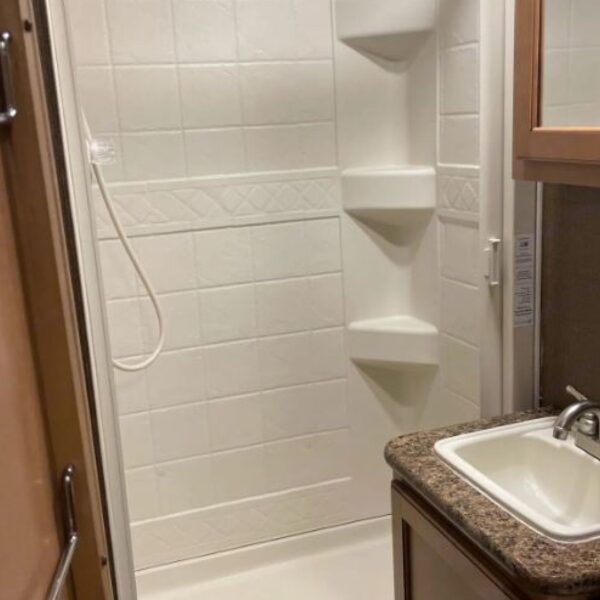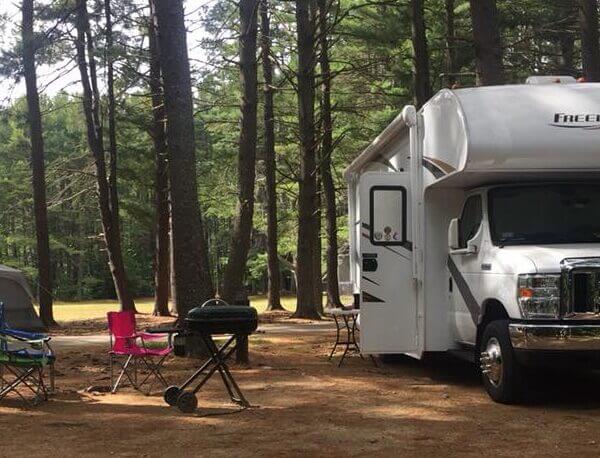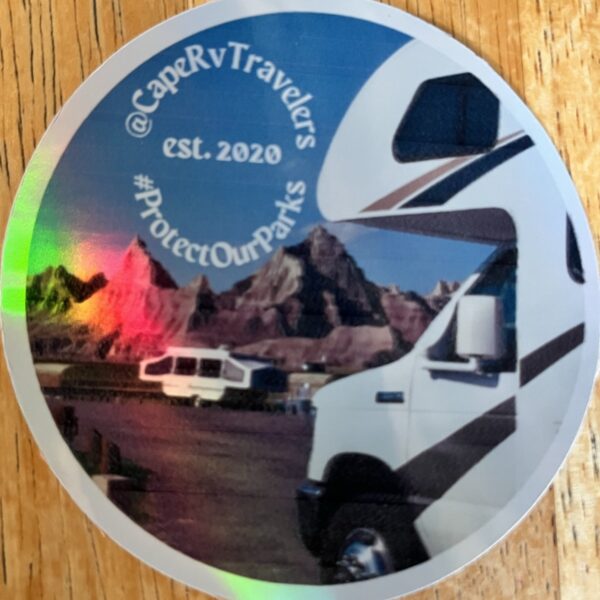Fall in New England is a great season. The leaves start to turn colors and fall from the trees. Suddenly the days are shorter and the nights are colder. Many people look forward to this time of year after the hot summer months. It is also the time to decide when to winterize your RV.
Fall is also the time of year when our camping season is over. Parking an RV for the long winter requires some preventive measures. This will ensure that it will be ready to use next spring. In addition, you will be glad to not have costly repair bills due to the damaging results of winter.
The 10 easy steps below will help you winterize your RV, and make sure it is ready for the long winter months.
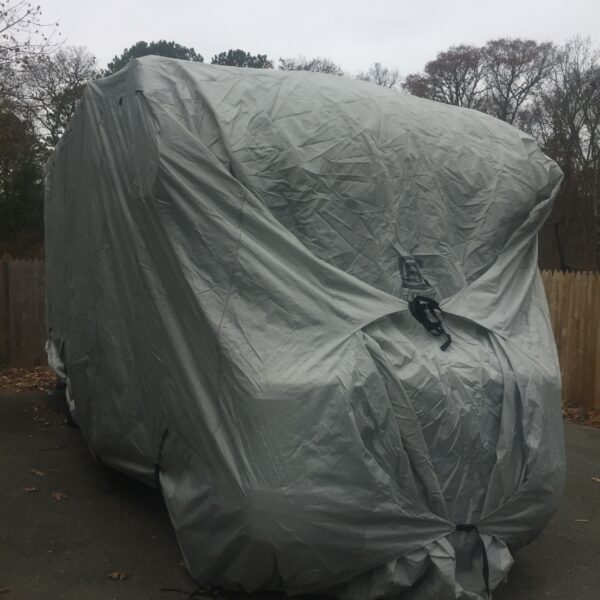
Why Winterize Your RV
Freezing temperatures can take their toll on more than just your rig’s water lines. Winterizing is primarily about keeping your water lines from freezing by flushing them and then adding antifreeze in certain places. However, as you will see there is a little more to protect the RV for the winter.
10 Steps to Winterizing Your RV.
- Drain your freshwater holding tank.
- Ensure that both the black, and grey tanks are empty.
- Drain your water heater. This is done simply by removing the drain plug and opening the pressure relief valve.
- Open all hot and cold faucets to relieve pressure, and then close them.
- Locate and open the low-point drain lines if your RV is equipped with them.
- By-pass your water heater.
- Turn the water pump on and pressurize the water system with antifreeze. Starting with the closest faucet to the water pump, slowly open the hot and then cold valves until antifreeze appears.
- Repeat this process on all faucets, including the shower, from the closest to the farthest away.
- Flush the toilet until antifreeze appears.
- Pour a cupful of antifreeze down each drain. Also, pour a couple of cups into the toilet and flush into the holding tank.
How to Drain Your Water Heater
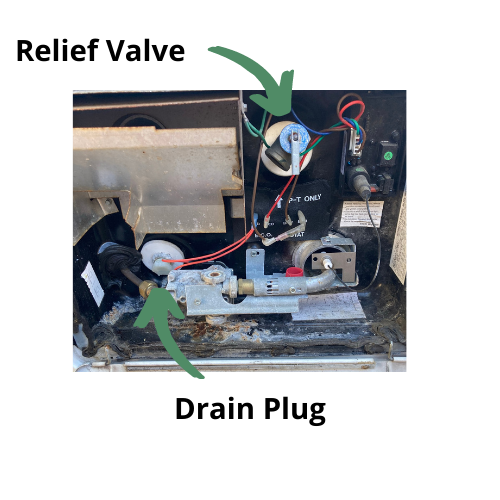
Draining your water heater is an important step when winterizing your RV, or simply storing it for an extended time. Properly draining your water heater is necessary to prevent the water from going stale and freezing in winter.
Before draining make sure to shut off the water going into the RV, including and relieve any pressure by opening a cold and hot water faucet.
You will also want to let the water in the tank cool down before draining.
Then there are two simple steps.
- Remove the Drain Plug – This is most often found at the bottom of the heater.
- Open the Pressure Relief Valve – Typically located at the top of the heater. This will help the water drain.
After all the water has drained out you have drained the water tank.
How to By-Pass Your Water Heater
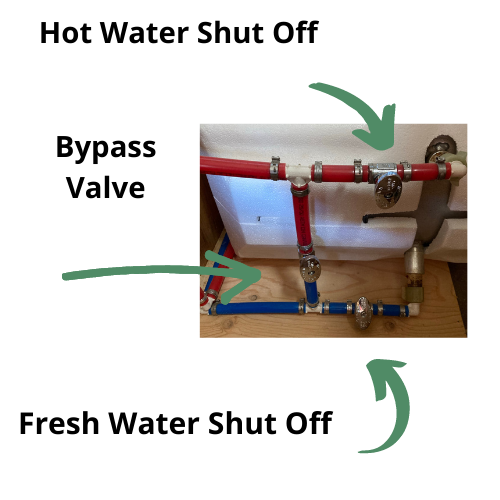
It is important to review your owner’s manual first and understand your water heater by-pass system. The one described here is one of the more common. However, they are not all the same.
Using these common three-valve bypasses is an easy, and quick process. For the type of system shown, there are three easy steps.
- Close the freshwater line valve: This will stop fresh water from entering the tank.
- Open the Bypass line valve: This is located in the middle of the system between the cold and hot lines.
- Close the hot water line valve. This will prevent freshwater from the bypass line from entering the tank.
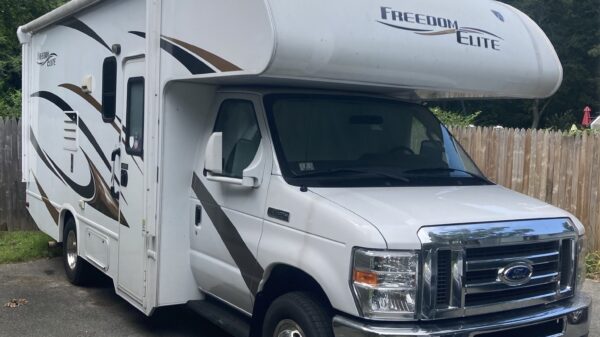
The freezing temperatures of winter can cause costly damage to your RV if you are not prepared.
There are many options for RV antifreeze. We use PEAK RV & Marine Antifreeze -50°F where we are located and have had great luck.
We also recommend cleaning, and properly caring for your holding tanks prior to putting the RV away for the winter.
We love to hear from our followers. Please leave a comment below.
Do you winterize your RV for the winter? Are there any additional tips you have to help keep your RV protected during the winter months?

